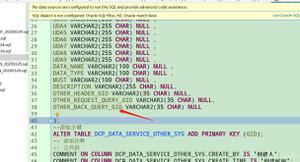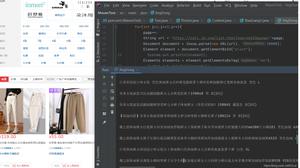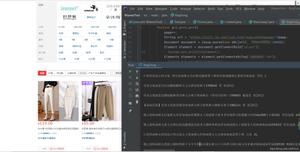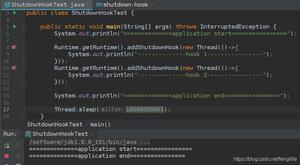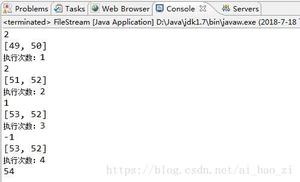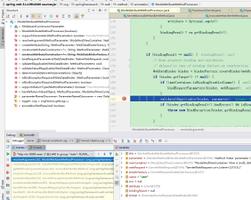如何在多线程环境中有效使用RestTemplate?
我正在开发一个项目,在该项目中,我需要对正在运行的服务器进行HTTP URL调用,该服务器Restful Service将响应作为JSON字符串返回。
下面是我的主要代码,它使用future和callables-
public class TimeoutThreadExample { private ExecutorService executor = Executors.newFixedThreadPool(10);
public String getData() {
Future<String> future = executor.submit(new Task());
String response = null;
try {
response = future.get(100, TimeUnit.MILLISECONDS);
} catch (TimeoutException e) {
e.printStackTrace();
} catch (InterruptedException e) {
e.printStackTrace();
} catch (ExecutionException e) {
e.printStackTrace();
}
return response;
}
}
下面是我的Task类,它实现Callable接口并使用RestTemplate…
class Task implements Callable<String> { private RestTemplate restTemplate = new RestTemplate();
public String call() throws Exception {
String url = "some_url";
String response = restTemplate.getForObject(url, String.class);
return response;
}
}
现在我有下面的代码在另一大类DemoTest它调用的getData方法TimeoutThreadExample类5000 times顺序-
public class DemoTest { public static void main(String[] args) {
TimeoutThreadExample bc = new TimeoutThreadExample();
for (int i = 0; i <= 5000; i++) {
// TimerTest timer = TimerTest.getInstance(); // line 1
bc.getData();
// timer.getDuration(); // line 2
}
}
}
所以我的问题是RestTemplate在这里应该是静态的,Task
class就像我正确看到的一样,我正在为每个请求重新创建整个连接池,RestTemplate而我猜这不是正确的方法。
如果我将RestTemplate设为静态,则RestTemplate在注释掉DemoTest衡量性能的类中的line1和line2之后,与非静态相比,我看到的端到端性能更好。
通常,RestTemplate在多线程环境中使用正确的方法是什么?目前,我要依次调用getData方法5000次,但是有些客户会以多线程方式调用它,因此需要知道在多线程环境中使用RestTemplate的最佳方法是什么。
可能是在RestTemplate构造函数中使用ConnectionFactory吗?有什么想法吗?
public class TimeoutThreadExample { private ExecutorService executor = Executors.newFixedThreadPool(10);
private RestTemplate restTemplate = new RestTemplate();
public String getData() {
Future<String> future = executor.submit(new Task(restTemplate));
String response = null;
try {
response = future.get(100, TimeUnit.MILLISECONDS);
} catch (TimeoutException e) {
e.printStackTrace();
} catch (InterruptedException e) {
e.printStackTrace();
} catch (ExecutionException e) {
e.printStackTrace();
}
return response;
}
}
而我的下面TaskClass-
class Task implements Callable<String> { private RestTemplate restTemplate;
public Task(RestTemplate restTemplate) {
this.restTemplate = restTemplate;
}
public String call() throws Exception {
String url = "some_url";
String response = restTemplate.getForObject(url, String.class);
return response;
}
}
回答:
如果我不明白您的问题,请纠正我。它似乎与这里的前一个非常相似。
在那里,我们确定这RestTemplate是线程安全的。因此,没有理由不在有意义的地方共享它。无论您在哪里以相同的方式使用它。您的示例似乎是执行此操作的理想场所。
如您所述,RestTemplate为每个Task实例重新创建一个新实例是浪费的。
我将创建RestTemplatein TimeoutThreadExample并将其Task作为构造函数参数传递给the 。
class Task implements Callable<String> { private RestTemplate restTemplate;
public Task(RestTemplate restTemplate) {
this.restTemplate = restTemplate;
}
public String call() throws Exception {
String url = "some_url";
String response = restTemplate.getForObject(url, String.class);
return response;
}
}
这样,您可以RestTemplate在所有Task对象之间共享实例。
注意,RestTemplate用于SimpleClientHttpRequestFactory创建其连接。
以上是 如何在多线程环境中有效使用RestTemplate? 的全部内容, 来源链接: utcz.com/qa/434915.html

